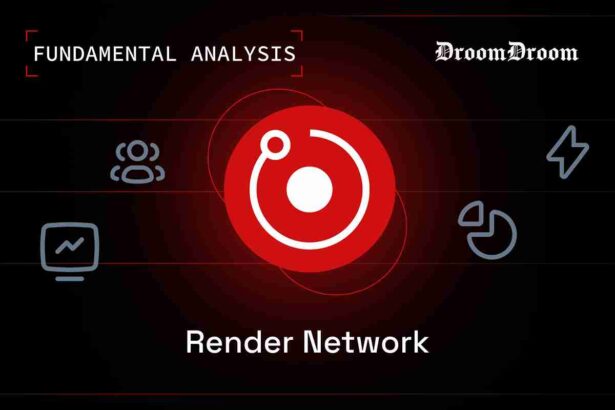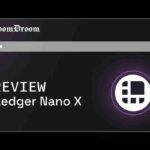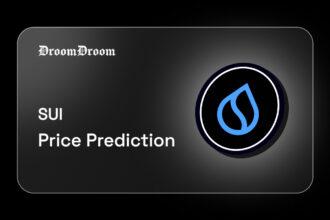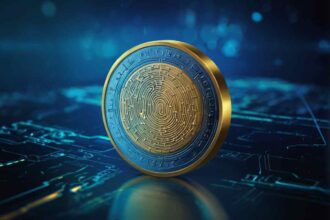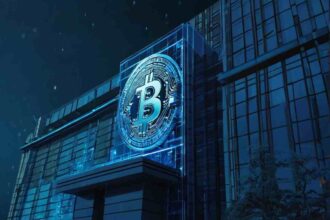Today, the rising explosion of artificial intelligence has continued to impact every industry. In the crypto sphere, AI-focused projects are witnessing a very fast adoption rate, thereby impacting their native cryptocurrencies. Recall that these projects have their own tokens. Through these tokens, the platforms are able to monetize their offerings. In recent times, these tokens, including render, singularityNET and others spiked following the success of ChatGPT. It is noteworthy that AI-focused tokens are highly volatile like other cryptocurrencies and can be impacted by the indices in the broader market. No wonder, they responded massively to the recent BTC price rally. To know more about how AI tokens responded to the BTC rally, read this article.
Certainly, AI technologies are here to stay and will continue to impact the performance of all its tokens. There are a huge number of AI-focused projects in today’s crypto industry. One of them is Render, a top-notch project that has started to gain the interest of investors in the space. Recently, the project recorded a substantial price movement and has since continued to dominate the airspace as a token with a promising future. Hence, this article will do a fundamental analysis on the crypto project.
Summary of Render Token Whitepaper
Our background check of the whitepaper of Render Token reveals the project as a network that offers GPU-oriented rendering solutions. In a bid to transform the digital creation procedures, the project performs the function of changing a 2D or 3D computer model into a realistic image. This process is called rendering. Notably, it seeks to ensure the democratization of GPU cloud rendering by making the process intricate and accessible to every user.
Remarkably, the AI-focused project offers effective, scalable and secure rendering services. It achieves this by linking users to participate in the render jobs. Therefore, those with unused GPUs will process and complete the render task by connecting their GPU to the platform. Its whitepaper explains the growing significance of this rendering, particularly to architects, computer engineers and programme developers. According to the paper, engineers, for instance, can harness real-time rendering to develop a dynamic virtual reality for their users. It is noteworthy that its native crypto is popularly known as RNDR.
• Learn about the Render Network: https://t.co/WIi9RUWiIW
• Subscribe to Email Newsletter:https://t.co/Pea5Jh7axD…#RenderNetwork #RNDR #Octane #Octanex
— Render Network | RNDR (@RenderToken) March 23, 2023Founding Team of the Render Project
According to our findings, the project was established by Jules Urbach. Aside from founding this project, Urbach also founded OTOY, a company notable for cloud rendering services. Another big member of the team is Ari Emmanuel. Currently, Emmanuel is the co-founder and co-CEO of the project.
Distribution of RNDR tokens
A fundamental insight into the project leads us into analyzing how its tokens are distributed. According to our findings, 25% of the token will be sold. 10% will be kept in the RNDR reserve. Lastly, 65% of the crypto will be in escrow for supply and demand flowback to the network.
Use Cases of RNDR
It is noteworthy that RNDR coordinates all the economic activities on its native protocol. The token serves as the primary medium through which users pay for rendering and streaming offerings on the network. According to its whitepaper, the cost of rendering and streaming jobs carried out by a party is usually determined in render tokens.
In a recent blog post, render network described the major use cases of RNDR. According to the post, the token is designed to establish three solutions for creators of content. These include rights protection, monetization, and giving power to individuals. For offering rendering services, users earn RNDR tokens. Meanwhile, just like other cryptocurrencies, render can be purchased, sold and received as a medium of investment, value and money. Those willing to buy the crypto may patronize numerous crypto exchanges, including Coinbase.
Competition
Fetch.ai (FET) – Certainly, Fetch is open-source, permissionless and thrives on the principle of multi-agent systems. By virtue of this, the protocol is able to develop an effective autonomous machine-to-machine ecosystem. Its ecosystem entails Autonomous Economic Agents (AEAs), which communicate and interact with one another. The native token of the platform, FET, has also been on a good run since January following the success recorded by ChatGPT.
Graph (GRT) – This is another notable AI-focused project that has started to gain the attention of users across the globe. Graph is designed to run as an integration layer for decentralized applications, indexing blockchain records from networks. The data is usually organized for easy access and retrieval from the blockchain. It’s native token is widely known as GRT.
Future of RNDR Tokens
Just like every other AI project, Render project is tipped to achieve greater heights in the future. Recall that it manifested as the first AI-focused project to transform the power of GPU computation into a decentralized 3D asset. All its innovations have over time, impacted the performance of its token. This thus means the future performance of the token rests on the use cases of the platform.
More so, as all AI projects continue to grow in popularity and adoption, all the concerned tokens will be impacted. This is evident in how the success of ChatGPT spiked RNDR and others. From the beginning of the year till the time of writing, RNDR surged from $0.04 to $1.18. This represents over a 2000% rise within the last three months.
Drawback and Weaknesses
The drawback with this token is similar to the one faced by other AI-focused tokens. Since the use cases of the platform are still tied to its platform alone, the interest in the token has been restrained. Perhaps, when the use cases of the token start to increase, its level of adoption will certainly rise.
Our Takeaway
Remarkably, the render network has cemented its place as one of the AI-focused projects with huge potential. It is based on this premise that analysts tipped its token to attain $11 before the end of 2024. However, this can only be feasible if the network continues to improve its offerings. At the moment, its team are working tirelessly to expand the use cases of the platform. Hence, we can assert that an exciting future awaits RNDR.
